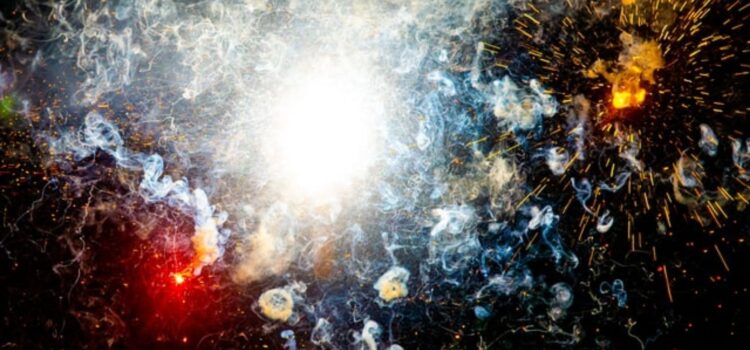

This article is an excerpt from the Shortform book guide to "A Brief History of Time" by Stephen Hawking. Shortform has the world's best summaries and analyses of books you should be reading.
Like this article? Sign up for a free trial here .
What is the Hot Big Bang Theory? What does the Hot Big Bang model tell us about the initial state of the universe?
According to the Hot Big Bang Theory, the post-Big-Bang universe was extremely hot (hence the name). Because of that, particles were moving too quickly to coalesce together and form the building blocks of matter.
The Hot Big Bang Theory explains a lot about the observable universe, but not everything. Here are some things it doesn’t account for.
What Is the Hot Big Bang Theory?
For most of the 20th century, the “Hot Big Bang” model has been used to tell the story of the origin and development of the universe. The Hot Big Bang Theory states that, after the initial Big Bang explosion, the universe was incredibly hot, meaning that particles were moving too quickly to merge together to form protons, neutrons, atoms, and molecules. But as the universe expanded, it began to cool, and the particles slowed down. This led to a series of nuclear fusions, in which stars were formed, as well as more complex elements like hydrogen and helium (this all would have taken place within mere milliseconds of the Big Bang). After just a few hours, most of the hydrogen and helium in our universe today were created, concentrated in enormous clouds.
As the universe continued expanding and cooling over the next few million years, these massive clouds collapsed under their gravity, catalyzing a new series of nuclear reactions. Moreover, the first generation of stars began to suffer gravitational collapse within roughly 100 million years after their creation, throwing off mass and energy as they died. Through these combined effects, some of the heavier and more complex elements produced in the cores of this first generation of stars were blown off into space in explosions called supernovae. Through gravitational attraction, the fallout from the supernovae formed second-, third-, and fourth-generation stars like our own, as well as planets like Earth.
Eventually, elements like oxygen were formed on the cooling Earth, combining with the abundant hydrogen to create water and the other necessities of intelligent life.
Where the Theory Falls Short
The Hot Big Bang Theory explains a lot about our universe, but there are some things it fails to account for:
- It merely assumes its core premise—that the early universe was hot—without explaining why.
- It also fails to account for the seeming uniformity of the universe on a large scale at all points of space-time, perhaps best exemplified by the omnipresent background microwave radiation.
- Its rate of expansion for the universe is too perfect—it postulates a rate of expansion just large enough to avoid collapse, when, if the initial rate of expansion after the Big Bang had been only infinitesimally smaller, the universe would have already collapsed.
- The model doesn’t account for the small variations in density that led to the formation of regional phenomena, like stars and galaxies, forming where they did.
One could just go the theological route to answer these questions about the state of the universe at the time of the Big Bang, the very beginning of space-time itself. Maybe God just created these conditions for unknowable reasons that mankind can never hope to uncover. This explanation, however, is not consistent with the history of science. Human scientific pursuit is defined by the discovery of rational and consistent laws for what were once thought to be inexplicable acts of divinity.

———End of Preview———
Like what you just read? Read the rest of the world's best book summary and analysis of Stephen Hawking's "A Brief History of Time" at Shortform .
Here's what you'll find in our full A Brief History of Time summary :
- The search for a theory that explains the history and evolution of our universe
- Stephen Hawking's discussions about time, space, dimensions, and quantum theory
- How time travel would theoretically work






